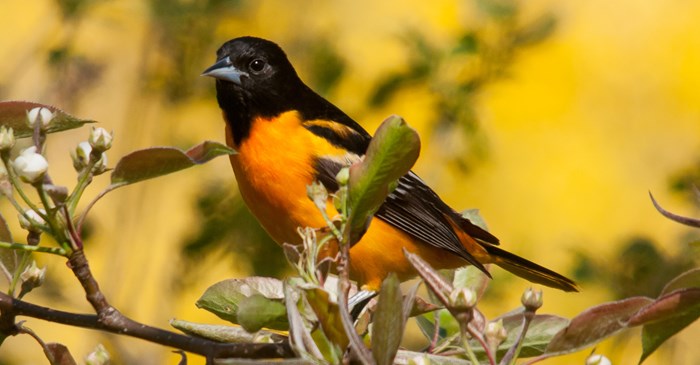Springtime means the return of some of our flashiest, most colorful songbirds, returning from a winter paradise in Central and South Americas. From March through June, waves of birds known as long-distance migrants will make their way north to their breeding grounds in the U.S. and Canada, where the days are long and the insects plentiful. (This animated migration map from the Cornell Lab of Ornithology is a must-see.)
It’s worth getting to know these hardy travelers, whether they’re passing through or returning to your region.
In your yard: Some distance fliers may see your feeding station as a welcome rest stop on the flyway to their summer home, so keep those feeders well filled. To attract those who opt for insects and fruit, fresh water is a welcome sight. Disinfect and fill your birdbath with fresh water. Set out Lyric Supreme Wild Bird Mix, with the large variety of ingredients it is sure to attract any hungry seed-eating bird that is flying through.
Out and about: If you want to expand your knowledge, there's a long list of colorful warblers and other species to discover when you venture away from the backyard and open parks. Check online for your local Audubon chapter for field trips and outings. You may even discover that you live near a major flyway or migration corridor, offering world-class birdwatching.
7 returning backyard birds to watch for
Here's how to attract these songbirds to your yard as they return to their summer homes:
- Baltimore Oriole: Set out cut orange halves and jelly for this showy orange and black bird.
- Black-headed Grosbeak: These western birds are drawn to yards with lots of tall trees.
- Indigo Bunting
- And the Lazuli Bunting: These stunning blue birds are drawn to feeders with small seeds, especially Nyjer seed.
- Purple Martin: Install a martin house in your backyard for a chance to watch these social birds co-parent their nestlings.
- Rose-breasted Grosbeak: Get an up-close look at these black-and-white birds with the telltale patch of scarlet on their breast. They are drawn to safflower seeds, sunflower seeds and peanuts.
- Scarlet Tanager: A berry bush as a source of food, including raspberries, chokecherries and huckleberries, will draw these bright red beauties down from the high treetops.
